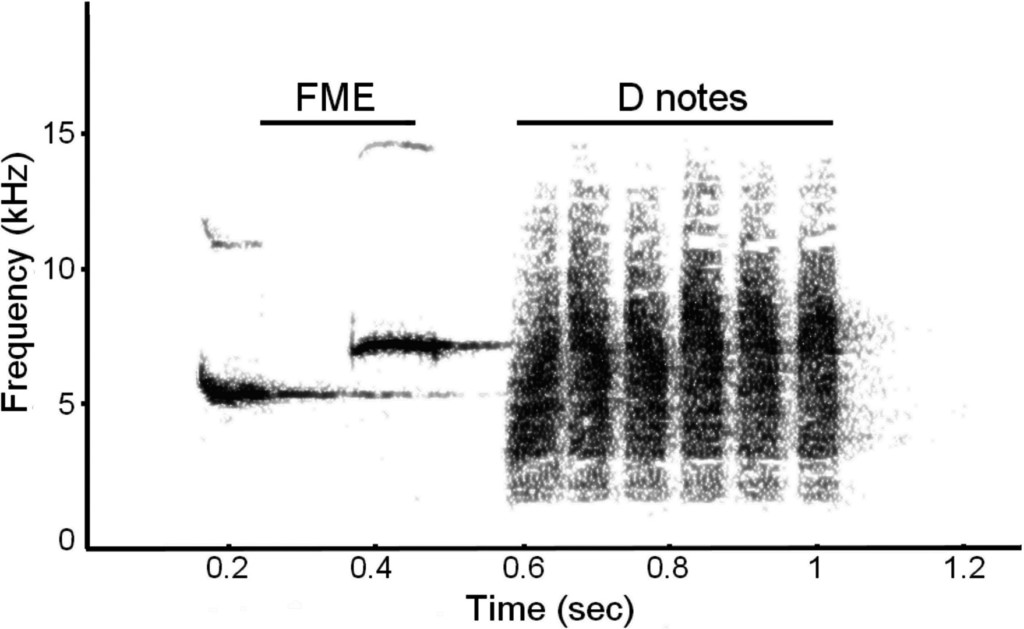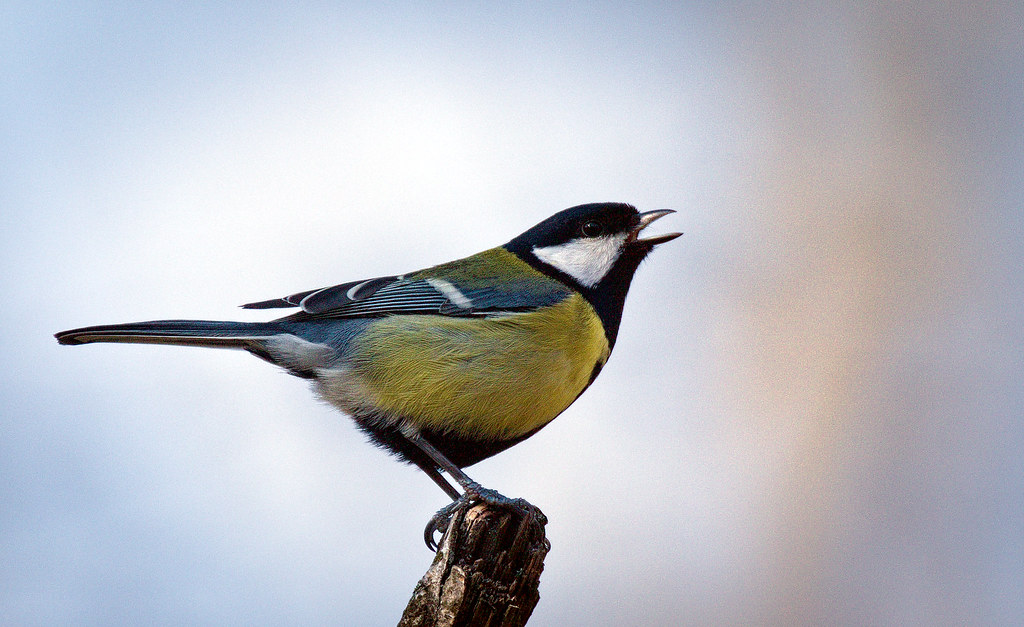
LINKED PAPER
Biological conclusions about importance of order in mobbing calls vary with the reproductive context in Great Tits (Parus major). Mann, J. T., Mann, E. A., & Clark, A. B. 2021. IBIS. DOI: 10.1111/ibi.12940. VIEW
When humans talk to each other, the order of the words often matters. Saying “dog bites man” has a drastically different meaning than “man bites dog”. This phenomenon has also been found in the mobbing calls of certain bird species (Engesser & Townsend 2019). For example, when Japanese Tits (Parus minor) detect a predator, they produce a series of notes to sound the alarm. These calls consist of two main types of sounds: a series of three distinct notes (A-B-C) followed by several D-notes. Because the first three notes jump between different frequencies, they are also referred to as FME (frequency modulated elements). It turns out that these FME and D-notes trigger different behaviors: the FME-part of the call is associated with increased vigilance whereas the D-notes elicit an approach towards the predator. Interestingly, when the order of the notes was reversed (D – FME), the Japanese Tits responded less to the alarm calls, suggesting that the order of the sounds matters (Suzuki et al. 2016). However, experiments with Great Tits (Parus major) reported that this species reacted similarly to the natural call and the reversed version (Dutour et al. 2019). Does this mean that Japanese Tits and Great Tits speak different languages?
Experiments
A closer look at the studies on these two species reveals an important distinction: Japanese Tits were tested during the non-breeding season, while the experiments with Great Tits took place during the breeding season. The interpretation of the alarm calls might thus be season-specific. To test this hypothesis, a team of French ornithologists investigated the mobbing behavior of Great Tits in both seasons. In winter and in spring, they exposed the birds to recordings of the natural calls, the reversed order and only background noise (as a control). These experiments showed that, in spring, the birds were more vigilant when hearing natural calls than when exposed to the reversed calls. This effect was not apparent in winter. With regard to the approaching behavior, the birds reacted less to the reversed calls in winter, but not in spring. These findings indicate that the seasonal context influences how Great Tits respond to alarm calls.

Figure 1. Sonogram of a Great Tit mobbing call, comprised of two distinct note types: the alert call (composed of frequency modulated elements, FME) and recruitment call (a string of D notes).
Winter and spring
The behavioral changes of the Great Tits make a lot of sense when you consider their activities during spring and winter. During the non-breeding season, these birds tend to form flocks with other species in search of food. Spending time in these mixed-species groups might render Great Tits more sensitive to the calls of these species, and other unknown sounds. That could be why the birds also became more vigilant when they heard the reversed recordings during winter (Clay et al. 2012). In spring, however, Great Tits have to defend a breeding territory. They will be thus more aggressive and engage in attacks more quickly. Hence, it is not a surprise that the birds vigorously approached both natural and reversed calls during the breeding season (Wingfield & Ramenofsky 1985). Any intruder – no matter in what order he produces an alarm call – should be expelled from the breeding territory. Clearly, context matters.
References
Clay, Z., Smith, C.L. & Blumstein, D.T. (2012). Food-associated vocalizations in mammals and birds: what do these calls really mean? Animal Behaviour 83: 323– 330. VIEW
Dutour, M., Léna, J.-P. & Lengagne, T. (2019). Syntax manipulation changes perception of mobbing call sequences across passerine species. Ethology 125: 635– 644. VIEW
Engesser, S. & Townsend, S.W. (2019). Combinatoriality in the vocal systems of nonhuman animals. Wiley Interdisciplinary Reviews: Cognitive Science 10: e1493. VIEW
Suzuki, T.N., Wheatcroft, D. & Griesser, M. (2016). Experimental evidence for compositional syntax in bird calls. Nature Communications 7: 10986. VIEW
Wingfield, J.C. & Ramenofsky, M. (1985). Testosterone and aggressive behaviour during the reproductive cycle of male birds. Neurobiology. 92– 104. Berlin, Heidelberg: Springer. VIEW
Image credits
Top right: Great Tit (Parus major) | hedera.baltica | CC BY-SA 2.0 Flickr
Blog posts express the views of the individual author(s) and not those of the BOU.
If you want to write about your research in #theBOUblog, then please see here




